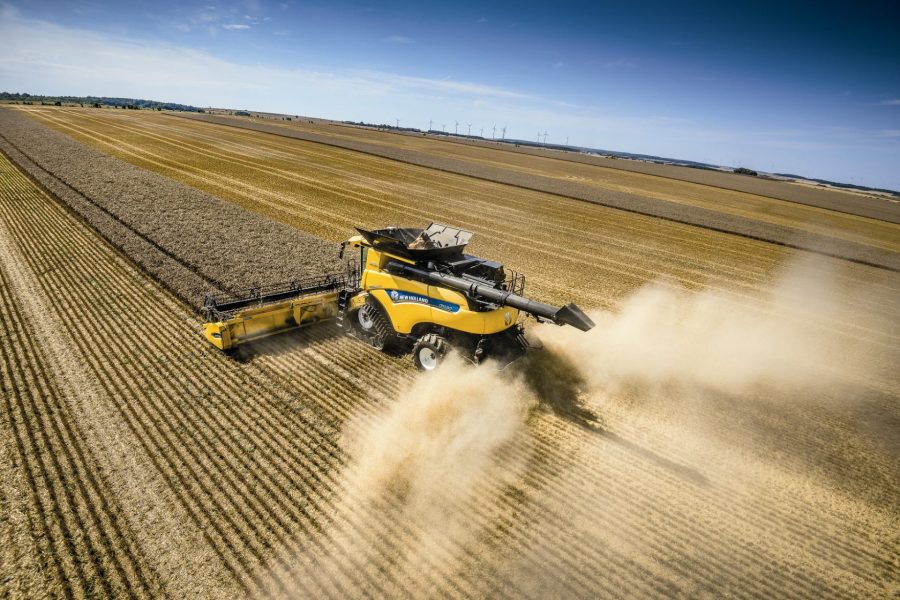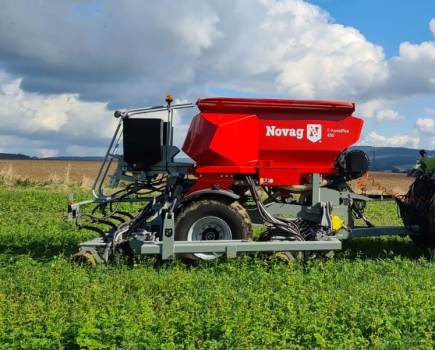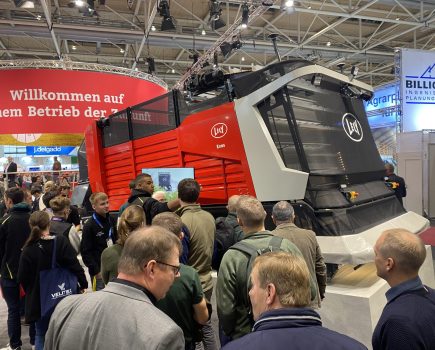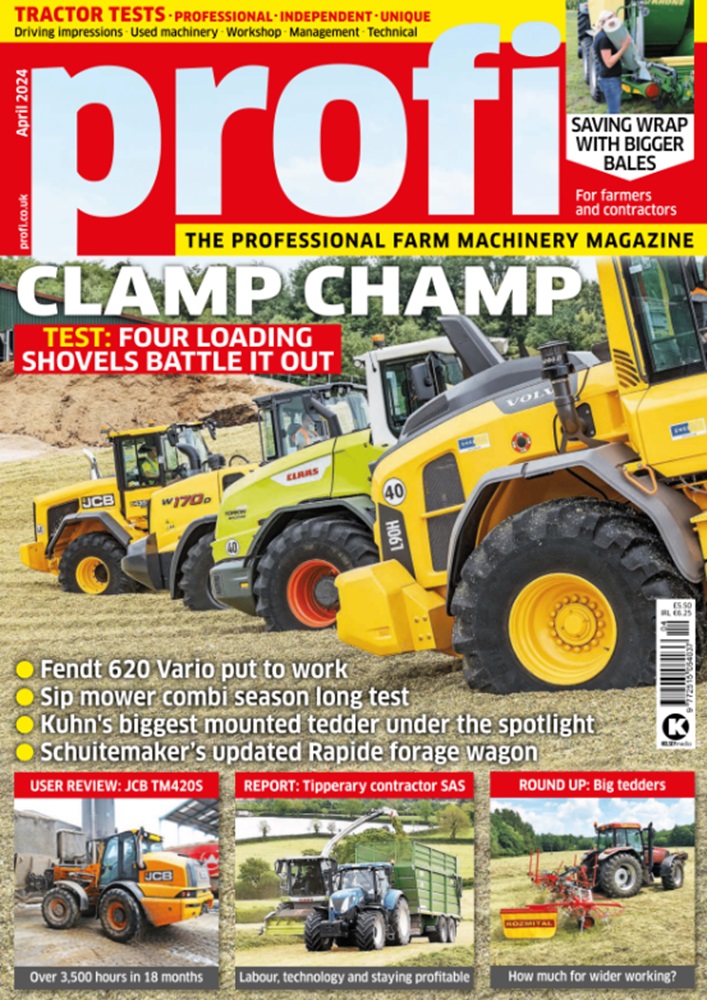Power to the CR7.80, a new entry level model in New Holland’s CR Revelation combine harvester line-up, comes courtesy of an FPT Industrial Stage V Cursor 9 common rail engine.
Together with the next model in the range, the CR7.90, these are the first two CRs to comply with the next round of engine emissions, which requires a further 40% reduction of particulate matter content compared to Stage IV.
In the CR7.80, the new block produces a rated output of 374hp (275kW) and maximum power of 415hp (305kW), while the CR7.90 benefits from an 11hp increase in maximum power to 460hp (338kW). The CR7.80 has a 750-litre fuel tank, and the unloading speed of the 9,500-litre grain tank is 126lit/sec.
New for all seven CR Revelation models is ground drive with a two-speed gearbox. This offers two ranges – one for field work, from 0 to 17km/hr, and one for road travel from zero to the maximum permitted road speed.
New Holland says that the larger hydrostatic pump in the new two-speed ground drive delivers more tractive effort, improved hill climbing and faster response and there is no need to stop to shift gears.
Other new features across the range include a double acting park brake, integrated wet brakes and electro-hydraulic differential lock operation.
Like the rest of the CR Revelation family, the CR7.80 features New Holland’s IntelliSense pro-active and automatic combine setting system, which won a silver medal in the 2017 Agritechnica innovation awards.
The IntelliCruise II crop feeding system, which automatically matches the forward speed to crop load, now features automated ground speed functions and offers a choice of three harvesting modes.
The new maximum capacity mode increases the combine’s forward speed to reach maximum engine load or maximum ground speed, while fixed throughput varies ground speed to maintain a pre-set load on the combine.
The limited loss mode varies ground speed to maintain a set flow, but if losses become excessive, throughput is reduced to limit losses. New Holland says the upgrades take efficiency to a new level and are a significant step forward in automation to take over decision making from the driver to optimise output and grain quality.






